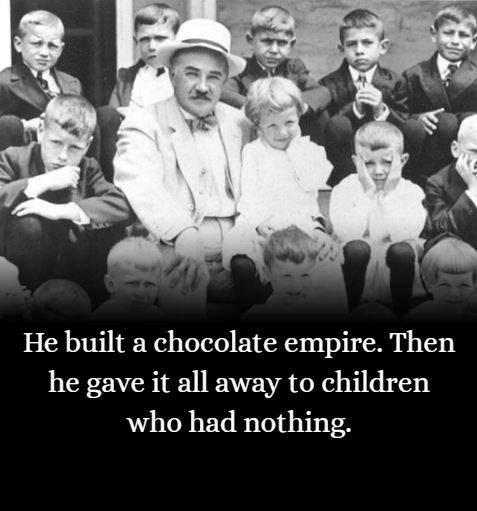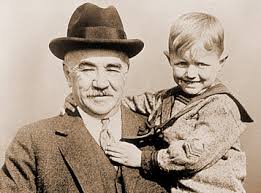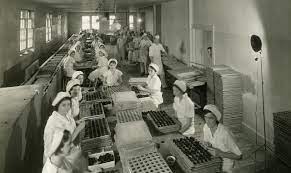Milton Hershey knew what it felt like to fail.

Milton Hershey knew what it felt like to fail.
Before he became the “Chocolate King,” he’d failed spectacularly—twice. His first candy business in Philadelphia went bankrupt. His second attempt in New York collapsed too. At 30 years old, he was broke, in debt, and living back with his parents in rural Pennsylvania.
Most people would have quit. Milton tried again.

By 1900, he’d finally succeeded beyond his wildest dreams. The Hershey Chocolate Company was making him millions. He’d built an entire town—Hershey, Pennsylvania—around his factory, complete with homes, parks, and trolley lines for his workers. He married Catherine “Kitty” Sweeney, the love of his life, and they built a mansion overlooking his chocolate empire.
They had everything. Except the one thing they wanted most: children.
Kitty couldn’t have biological children. In an era before adoption was common among wealthy families, the Hersheys faced a choice: they could live out their lives in comfort, or they could do something radical.
In 1909, they chose radical.

Milton and Kitty founded the Hershey Industrial School—a boarding school for orphaned boys who had nowhere else to go. Not a charity that sent monthly checks. Not a foundation with their names on a building. A real home where children without families could live, learn, and build futures.
The school started with just four boys. Milton and Kitty personally interviewed each one, making sure they felt wanted, not pitied. The boys lived in homesteads with house parents, attended classes, learned trades, and—crucially—were treated with dignity and love.

Kitty poured herself into the school, visiting constantly, learning the boys’ names, asking about their dreams. She saw them not as charity cases but as the children she’d never have.
When Kitty died suddenly in 1915 at just 42 years old, Milton was devastated. Friends assumed he’d abandon the school project—it had been their dream together, and now she was gone.
Instead, he doubled down.
In 1918, Milton Hershey made a decision that shocked the business world: he transferred the majority ownership of the Hershey Chocolate Company—valued at $60 million at the time—into a trust for the school.
Not a portion of his wealth. Not his personal fortune. The entire company.
Every Hershey bar sold would now fund the education of orphaned children. Every Reese’s Peanut Butter Cup, every Hershey’s Kiss—all of it feeding into a trust that would care for children long after Milton was gone.
Business associates thought he’d lost his mind. “What if the school fails?” they asked. “What if the company struggles?”
Milton’s response was simple: “If I wanted to build monuments to myself, I would have done it already. I want to build futures for kids who have none.”

He expanded the school, building more homesteads, hiring more teachers, admitting more students. Boys who’d been living in orphanages or on the streets now had warm beds, three meals a day, education, healthcare, and a genuine chance at life.
When Milton Hershey died in 1945 at age 88, he’d given away virtually his entire fortune. He died modestly, in a small apartment in the Hershey Hotel, surrounded by photos of the children his school had helped.
But here’s what makes this story extraordinary: it didn’t end with his death. It got bigger.
Today—79 years after Milton died—the Milton Hershey School serves over 2,000 students from kindergarten through 12th grade. Every single one attends completely free. No tuition. No fees.
The school provides:











